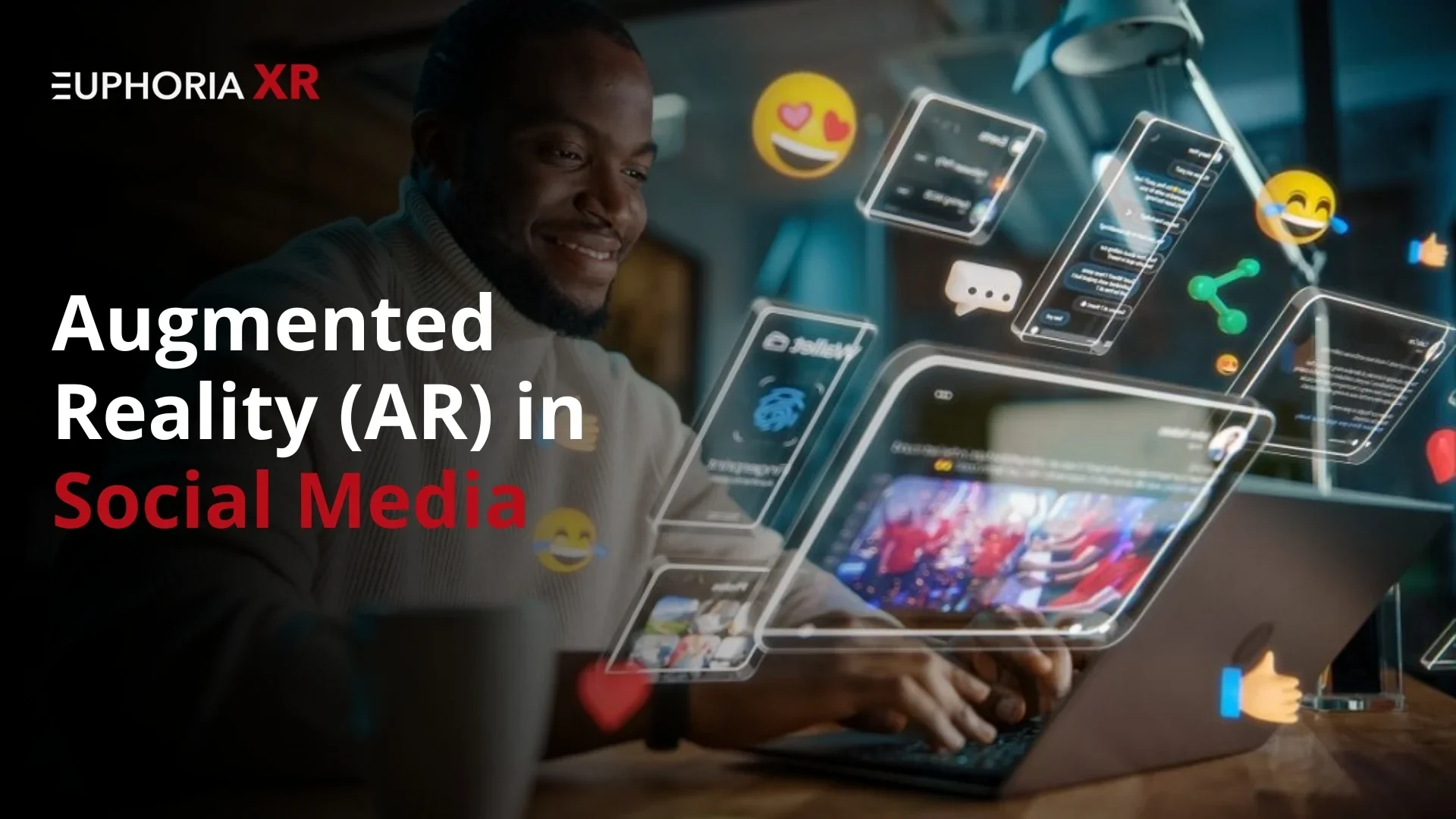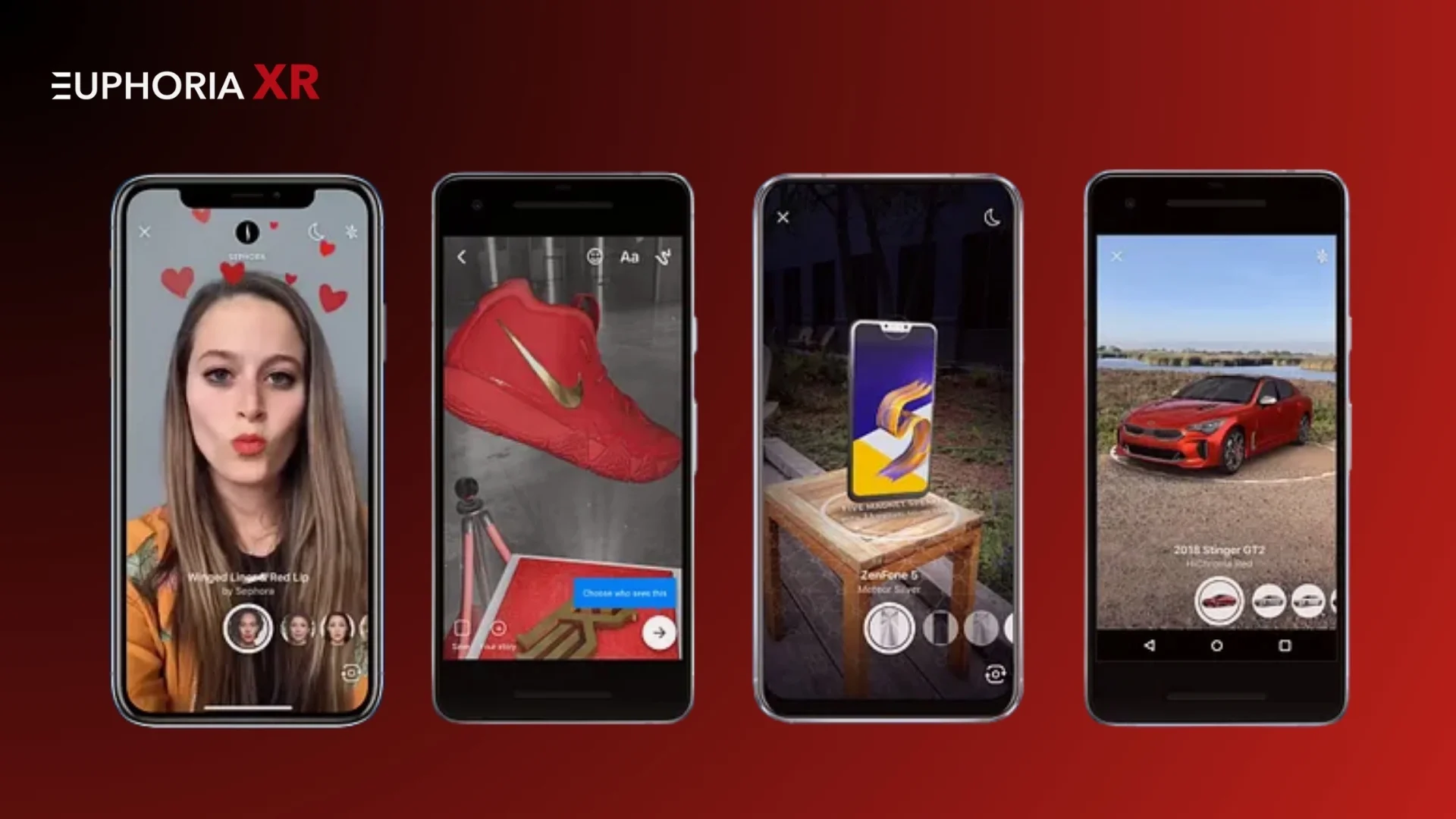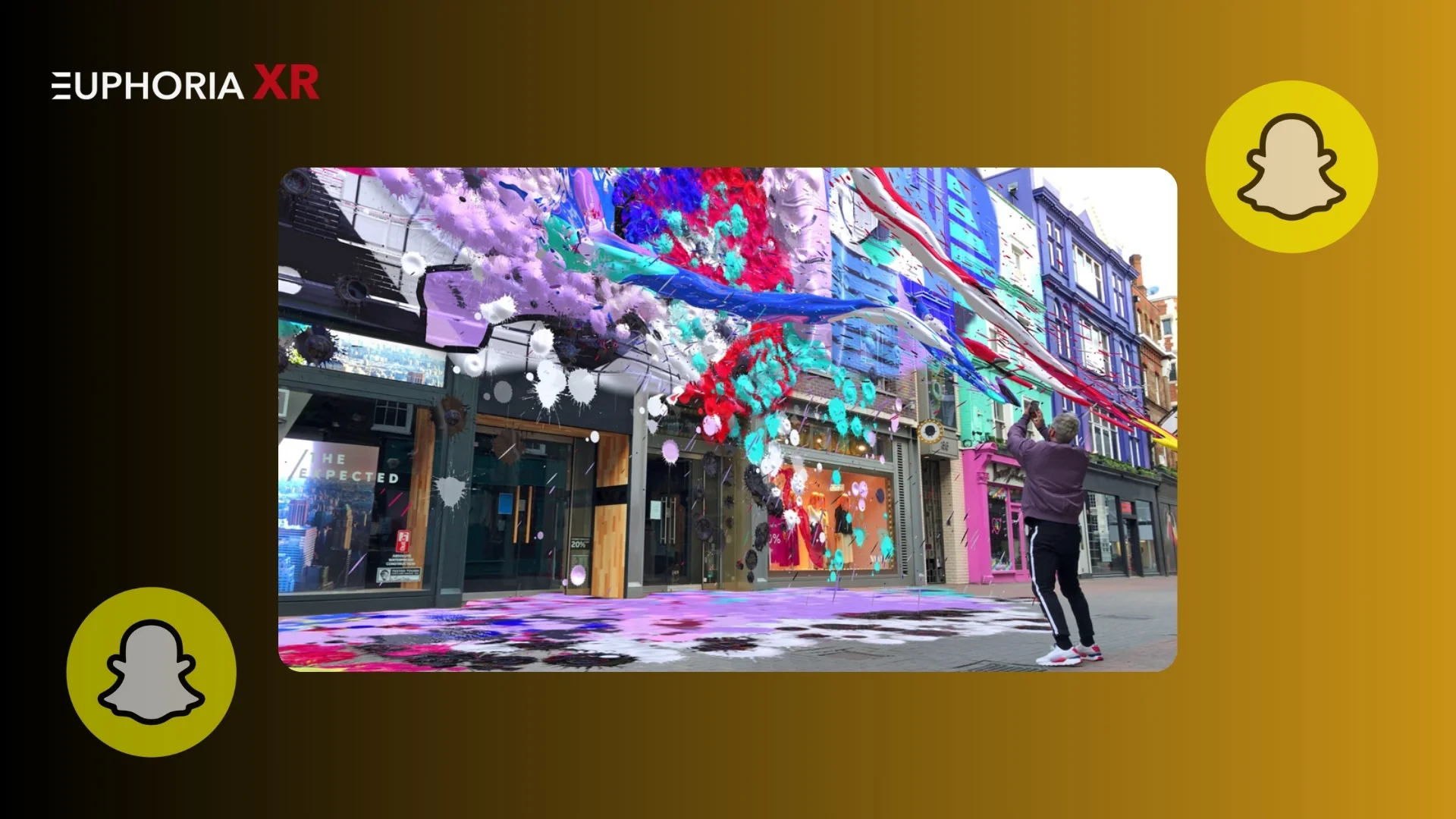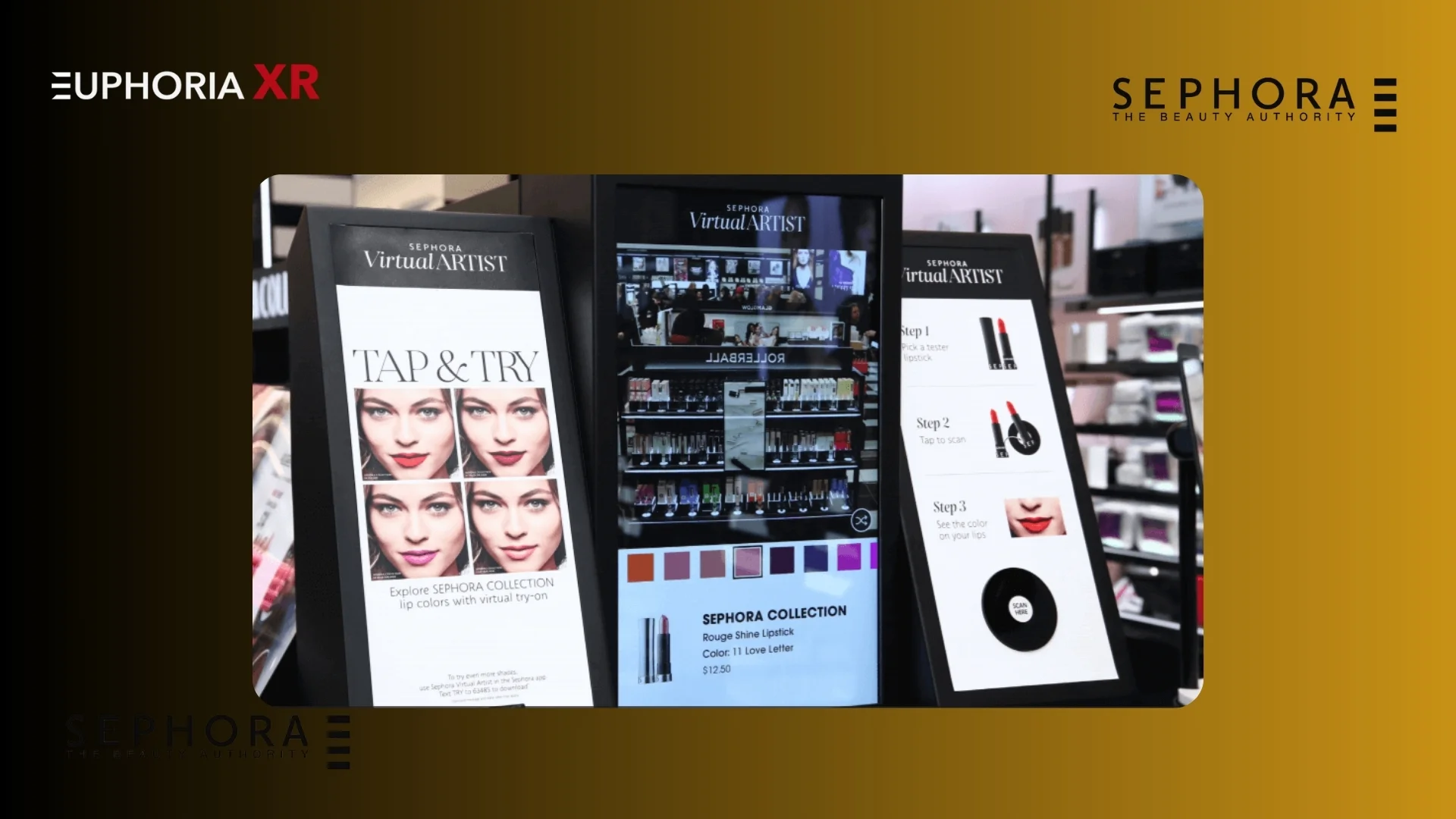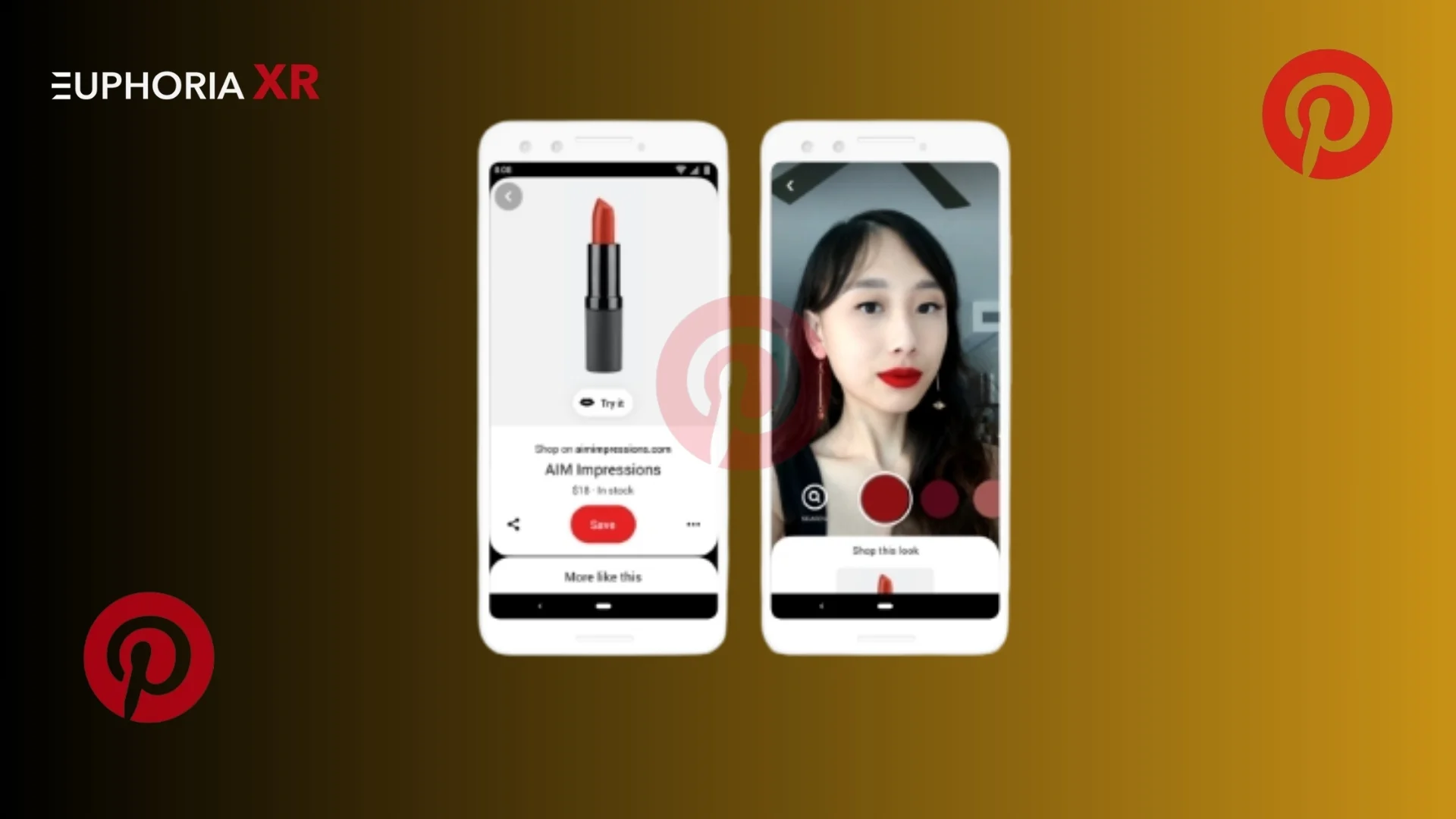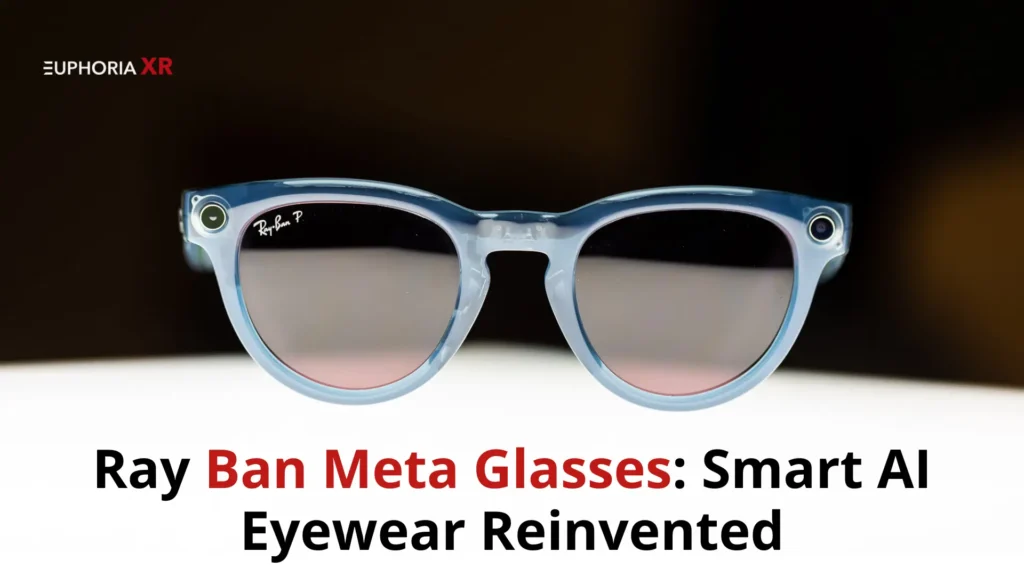✓ Have you ever looked over social media and thought everything looked the same?
The same old still images. overused filters. No one reads lengthy subtitles.
Everyone seems to be posting, but nobody is truly making an impression.
Instead, picture this: You open your camera, and all of a sudden, you are playing with a filter that responds to your movements, trying on sunglasses, or watching a product come to life in your room.
Augmented reality’s ability to turn regular material into memorable, interactive, and even shoppable experiences is what makes it so powerful on social media.
Not only is it entertaining, but in 2025 and beyond, it will be the most intelligent method for creators and businesses to interact, convert, and go viral.
What is Augmented Reality in Social Media?
Augmented reality (AR) in social media refers to using your phone’s camera to overlay real-world photos or videos with digital effects, such as animations, filters, or 3D objects. It combines what you see with additional layers of entertainment, engagement, or practical knowledge.
You have used augmented reality (AR) if you have ever experimented with a Snapchat lens that responds to your grin, used a dog ears filter on Instagram, or tried a TikTok face effect.
It is not only play, though. These days, AR allows consumers to experience virtual brand activations, see furniture in their homes, and put on makeup, all from within their preferred social media apps.
Simply put, augmented reality (AR) adds something additional to the actual world and gives your social media content life.
The Rise and Evolution of Augmented Reality in Social Media Platforms
The introduction of AR technology to social media started as an entertainment element. The introduction of face lenses by Snapchat in 2015 brought people joy as they could transform into puppies while applying rainbow vomit effects. People enjoyed its fresh and dynamic quality, which made the content highly distributable.
Instagram, together with Facebook, adopted Spark AR from Meta, which introduced mass-market custom filters. TikTok entered the game by introducing effects that merged popular content with interactive visual elements.
The adoption of AR extended beyond entertainment. Brands now employ augmented reality in social media to tell immersive stories, increase engagement, and increase revenue. Amazing new-age technology has evolved from being a specialty feature into a business requirement through AR shopping mechanisms and virtual gathering platforms.
Research by Deloitte shows the global population will become avid users of augmented reality by as much as 75% in 2025, since the popular social media platforms serve as primary drivers for consumer adoption.
Social media uses AR as a critical marketing tool beyond its initial filter-based popularity, and we are witnessing the beginning of major developments.
How Augmented Reality is Transforming Social Media Today
The evolution of Augmented Reality significantly impacts social media platforms at present. People used to perform social media tasks by scrolling through content. Now, it’s about interacting.
Users experience augmented reality technology to transition from passive viewers into active individuals participating in their digital content. The face filters, along with AR games and virtual try-ons, have transformed our entire online experience involving creation, consumption, and social interaction.
A substantial transformation occurs in social media because passive viewers transform into actual participants.
So, get the best Branded AR Filters tailored for your brand—boost engagement, captivate your audience, and stand out on social media!
Integration of Augmented Reality into Social Media Platforms
Modern major social networks have implemented AR functionality, which they embed inside fundamental platform operations.
The social media platforms Instagram and Facebook allow users and brand creators to make interactive filters for their application, Spark AR.
Users of Snapchat, which began its AR journey first, have reached 250 million daily AR interactions.
From Effect House, TikTok provides users with their own AR creation tools that speed up the process of making things go viral.
Complete integration allows platform users to access these features without external application usage. AR now resides within the daily platforms people use already, so users do not need separate programs.
What if people experienced your next campaign instead of just seeing it?
Use AR to begin producing interactive content right now.
Key Features of Augmented Reality in Social Media
The strong capability of AR as a social media tool derives from its unique ability to add creativity directly to real-time interactive experiences. People use this capability to superimpose creative elements onto real-time situations. These features stand out as the main attributes of AR in social media:
✔ A facial detection system enables users to apply virtual makeup along with digital accessories.
✔ Users can interact with AR through gesture movements that detect their smile expression or blink movements, or hand waves
✔ The platform adds three-dimensional features that adhere to body movements and transform the surrounding environment
✔ People can instantly modify their background without using green screen technology.
Social media users find these tools both enjoyable to use and look for due to their enhanced quality of shared content.
The Role of Augmented Reality in Social Media Shopping Experiences
Social media shopping exceeded basic link navigation when users experienced AR. Users can now try products before purchase through AR technology, which exists in their feed.
Tactical customers may test various lipstick and eyeshadow colors right on their skin through makeup brand services.
You can identify which eyeglasses match your facial appearance via virtual try-on features provided by eyewear companies.
You can use retailer websites to view furniture, such as couches and lamps, in the actual space where you plan to place them.
Shopify reports that products that incorporate AR content achieve 94% greater conversion rates than those products that do not use this technology. That’s not just engagement, it’s impact.
Location-Based Augmented Reality for Social Media Engagement
The application of AR technology will work efficiently even when deployed irregularly. Brands can use location-based filters alongside experiences to deliver content that matches every specific location.
Customers can access AR filters that function exclusively within specific retail locations when they walk through the store doors. The users gain access to a distinctive AR show by scanning a code at a festival event.
These experiences merge both physical and digital environments to provide an AR experience beyond screen-based interactions, so users can experience it in actual settings.
Branded Events and Campaigns Powered by Augmented Reality in Social Media
Augmented reality supports social media platforms through branded marketing programs, which organize events and campaigns.
New branded content enabled by AR has moved past traditional static advertising formats.
The launch of new products with AR filters offers consumers an opportunity to experience virtual unboxing.
Users can play mini-games that augment products with interactive game features and promotions.
Digital artworks through AR technology become animated the moment a user scans them with their camera
Users can conduct scavenger hunts in physical spaces where they can share their AR experiences.
Social media platforms use these interactive campaigns to boost user engagement and brand memory retention while gaining social media share popularity, mostly targeted at younger generations who seek interactive formats.
Examples of Augmented Reality in Social Media Campaigns
Viewing specific things operating in real time proves to be the most effective method for understanding their functions. Let us examine how major platforms and brands are utilizing augmented reality in social media to attract attention, interact with consumers, and possibly increase sales.
Snapchat’s Use of Augmented Reality in City Painter Campaigns
Snapchat became famous by introducing its Face Lenses to the world, yet managed to go even further by launching City Painter, a groundbreaking AR experiment that allowed users to create virtual spray painting scenes on London architecture through their mobile device screens.
What made it unique? All participants saw the painted image emerge in precisely the same location. The AR experience came together through the blend of artistic expression with technological components and social attributes.
Through this experiment, AR-enabled users to transform real-world locations into interactive digital spaces.
How Sephora Uses Augmented Reality on Social Media for Virtual Try-Ons
Users encounter difficulties when they decide to shop for makeup on the internet. The company implemented AR-based virtual try-ons, which users could access through Instagram and their app.
Through their smartphone camera, users could visualize different lipstick and eyeshadow, and foundation products directly on their face.
The combination of augmented reality transformed beauty buying into an engaging personalized experience that produced content customers who bought less frequently.
Read Also: https://euphoriaxr.com/augmented-reality-mirror-technology/
Pinterest’s Integration of Augmented Reality for Makeup Previews
Users now utilize Pinterest to run real-time makeup tests following the platform’s shift from a basic inspiration platform. Users could see different makeup products with AR try-on technology before purchasing through the platform.
It is a smooth experience. Users can activate the AR feature by one tap on the “Try On” button while looking at pins.
Pinterest reports that users become five times more likely to make purchasing decisions through their work with augmented reality features.
Instagram’s Strategy with Augmented Reality Stickers and Filters
AR filters gained popularity thanks to Instagram. People can find content ranging from beauty-enhancing effects to goofy face-distorting features among the various available options.
More impressive than anything else is the capability for brands to develop their own branded AR effects. The product launches of both Nike and Adidas utilize branded filters, and so does Netflix to enhance user engagement.
The filters activate users to become brand promoters who generate brand-oriented viral user-generated content.
Domino’s Augmented Reality Pizza Filter on Social Media
Domino’s used an appetizing strategy that included their AR pizza filter for social media engagement. With their AR technology, users could make custom virtual pizzas, then watch virtual cooking animations before being steered to the direct ordering pathway.
The initiative combined amusement with utility in an original way. The marketing initiative achieved higher numbers of customer involvement and e-commerce purchases because users could transition game activities into order placements.
TikTok’s Viral Trends Driven by Augmented Reality Effects
TikTok is a creative platform, and many of its most popular trends are fueled by AR.
AR Beauty Filters frequently enter the cultural discourse for a variety of purposes, such as green screen effects, quirky challenges, and beauty upgrades. Millions of user-generated videos can result from a single AR effect that becomes popular.
Additionally, the possibilities are growing every day since TikTok’s Effect House now allows creators to create their filters.
These examples demonstrate that augmented reality on social media is a potent tool for user engagement, conversion, and brand storytelling, not just a neat feature.
Brand Strategies Using Augmented Reality in Social Media
The modern use of social media involves brands building fully interactive environments within their realm. Through augmented reality, companies find opportunities to create instant digital links with their audience in natural environment interactions.
The main purpose goes beyond selling products. Users should be free themselves to interact with these components and enjoy both their functionality and the memory of their interactions.
How Brands Use Augmented Reality Filters and Lenses on Social Media
Digital billboards present themselves as AR filters because users find value in using them.
Social media platforms allow brands to implement AR filters, which serve three essential purposes: lowering barriers to trial alongside promoting items and events, and building brand equity.
New products like a sneaker try-on become available through these filters
Organize premieres and concerts as promotional events. Businesses can create branded face effects and small interactive games to construct their brand identity.
People who use branded AR effects obtain double benefits by becoming part of both the product experience and the brand narrative. That’s powerful.
Social media platforms have revealed through their analysis that brands that deploy AR filters double engagement numbers over basic mobile advertisements.
Suggested Read: https://euphoriaxr.com/top-augmented-reality-brand-experiences/
Creating Viral Experiences with Augmented Reality in Social Content
People seeking viral success today need to understand these secrets. Create content that loses its appeal only when shared by users.
AR effects stimulate users to produce content that provides repeatable brand visibility without costs. People become content creators when they use interactive AR effects, including fun filters or creative lenses, and challenge-based effects.
When you view it as a single filter leading to thousands of content generations, the idea makes sense. And the best part? When people use your branded effect, they expose your brand to their friends and followers without producing any sense of promotional messaging.
Benefits of Using Augmented Reality in Social Media Marketing
Enhanced User Experience Through Augmented Reality in Social Media
Through augmented reality, users obtain dynamic interactive content that enhances their enjoyment of the platform. Social media users gain active participation by testing products or playing with effects and engaging with brands, leading to extended periods of attention.
Creative Campaign Opportunities with Augmented Reality Integration
Organizations can upgrade straightforward promotions to complete interactive experiences. The use of augmented reality brings memorable interactive campaigns that users tend to share with others.
Improved Accessibility and Interaction Using Augmented Reality Features
The visual nature of AR technology, along with its easy user interface, operates without needing users to read anything. The visual nature of augmented reality technology expands brand visibility toward audiences who learn best through images, as well as those with special needs.
Challenges and Considerations for Augmented Reality in Social Media
Technical Limitations in Augmented Reality Implementation on Social Media
Members of the public might face technical difficulties while experiencing AR through their devices. Quality effect development requires considerable time during which testing must occur, while budget plays a crucial role.
Ethical Concerns Related to Augmented Reality in Social Engagement
Beauty filters create images that go beyond real human possibilities for appearance. Computers that perform face tracking for AR require topics such as privacy and consent to be carefully addressed.
Digital Accessibility and the Divide in Augmented Reality Reach
Part of the user population uses technology or Internet connections that do not support the operation of AR software. Brands must make sure they provide other presentation methods for all users to feel included.
Measuring the Performance of Augmented Reality in Social Media Campaigns
Keep an eye on the number of users who view, share, and use your AR filters. Track dwell time, click-throughs, and whether users visit your website or make a purchase. The majority of sites offer these insights straight.
What is preventing the visibility of your brand in the feed?
Give your audience experiences that will make them stop scrolling by hiring an Augmented Reality Development Company like EuphoriaXR.
The Future of Augmented Reality in Social Media Marketing
Social media augmentation technologies will expand further in the future. The advancement of technology enables better opportunities to create immersive AI-enhanced personalization features.
Emerging Trends and Innovations in Augmented Reality for Social Media
AI-Powered AR: Intelligent filters that change according to a user’s mood, facial expressions, or previous actions.
AR Commerce: One-click purchases straight from AR try-ons, which expedites and streamlines the buying experience.
Metaverse Integration: By integrating AR filters into enduring virtual environments, real and virtual worlds can be connected.
Creator-Led AR: AR influencer marketing is a result of creator-led AR, which gives producers more tools to create their filters and effects.
Platforms are making significant investments in AR development, so we anticipate a time when filters are not merely accessories but rather crucial components of e-commerce, content strategy, and narrative.
Conclusion: Why Augmented Reality in Social Media is the Next Big Marketing Shift
A vital component of how marketers engage with their customers on social media, augmented reality is no longer merely a fun add-on.
It has been shown to increase engagement and is inclusive, memorable, and engaging. AR gives you a creative advantage whether you are launching a product, increasing brand recognition, or simply wanting to stand out from the crowd.
Brands that adopt AR now will be at the forefront of the discussion tomorrow as more consumers want immersive experiences.

